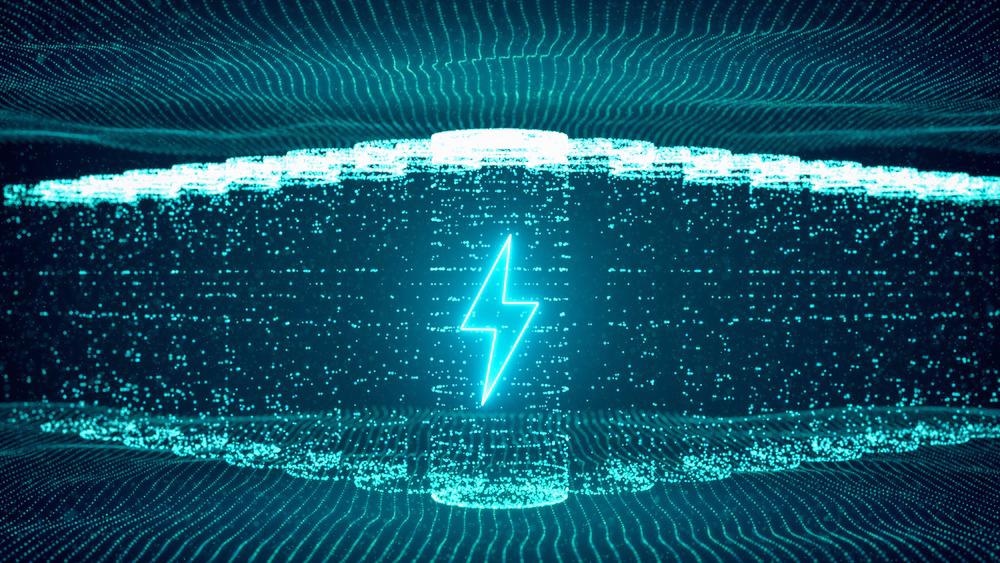The use of a nanoscale-confined process to create dual-doped spheres for energy storage was presented in a new study published in the journal ACS Nano.

Study: Engineering Electronic Transfer Dynamics and Ion Adsorption Capability in Dual-Doped Carbon for High-Energy Potassium Ion Hybrid Capacitors. Image Credit: Black_Kira/Shutterstock.com
Dual-Doped Carbon Spheres – The Answer to Energy Storage
With the ever-increasing requirement for battery packs as the primary power source for electric vehicles (EVs) and electrical gadgets, worries about scarcity and uneven geographical distribution of lithium reserves drive researchers to look for encouraging substitute candidates with minimal cost and desirable performance.
Sodium/potassium (Na+/K+) ion-based storage technologies, including Na+/K+ battery packs and hybrid capacitors, have lately been considered as encouraging substitutes for major power storing uses. This is mainly due to their reduced costs, vast reserves, physicochemical characteristics close to lithium, and roughly equivalent redox potentials to lithium-ion batteries.
Nonetheless, since Na+/K+ ions have a higher ionic radius than lithium (Li+), it is challenging for the most widely employed electrode substances in battery packs to accommodate Na+/K+ ions. Larger Na+/K+ ions, in particular, could gravely retard charge transport dynamics, leading to unsatisfactory specific capacities and substantial capacity fading, as well as considerable fluctuation in the volume of anodes/cathodes during the extraction process, resulting in structural breakdown and obliteration of anodes/cathodes.
As a result, there are still obstacles to discovering appropriate host substances to store alkali-based ions other than lithium.
Carbon-based compounds have piqued the attention of researchers as an effective potential candidate for anode construction in energy retention systems due to their diverse structural composition, ease of production, cheap cost, and ecologically friendly nature. Conventional carbons, on the other hand, have low-rate capability and quick capacity fading for Na+/K+ ion retention due to weaker charge dynamics and extreme volume fluctuation during the process.
Knowledge from Existing Research
To address these issues, much work has been devoted to the optimization of carbon-based electrode material. Constructing tubular frameworks, for example, might not only provide additional empty spaces with plentiful electroactive sites and improved electrolyte-electrode interaction for quicker ion and electron transfer and overcome the high-volume variability during the repetitive process of Na+/K+ ions insertion and exaction, thereby eradicating electrode obliteration. Furthermore, hetero-atom doping might improve the Na+/K+ ion adsorption capability, ion retention capacity, and conductivity of carbon-based composites.
Surface-driven charge retention behavior, which is among the primary factors in rapid kinetics, might be boosted by hetero-atom doping and associated flaws, which is conducive to boosting rate capability.
Based on these findings, it is projected that the impacts of N/P dual-doping and enhanced nano-framework engineering in carbon-based substances would produce more flaws and active sites, hence increasing the capacity's pseudo-capacitive contributions. However, certain difficult aspects must be dealt with properly to achieve more effective Na+/K+ ion storage.
In the study, the team reported a nanosized in-place polymerization method for the fabrication of phosphorus and nitrogen dual-doped hollowed carbon microspheres utilizing MnO2 tubular microspheres as the sacrificial template and oxidizing agent. The density functional theory (DFT) calculation shows that the P/N dual-doping may efficiently alter the electrical properties and further increase carbon's K+ adsorption properties by using the properties of P/N dual-doping, extremely mesoporous layout, and hollowed construction.
Important Findings of the Study
In this study, the team created phosphorus and nitrogen dual-doped hollowed carbon spheres (PNHCS) using a nanoscale restricted in-place polymerization technique using MnO2 hollowed spheres as the sacrificing template and oxidizing agent. The anode used in this system had good Na+/K+ ion storage capacity, which can be ascribed to the cylindrical shape and doping strategy of PNHCS.
The hollowed and porous layout provided quick carriage channels for ions and electrons while also releasing volume growth during discharging and charging processes.
The DFT calculation and integrated characterizations comprising in-situ Raman spectroscopy and ex-situ XPS analysis showed that dual-doping of P/N might improve the electron transfer kinetics and ion adsorption capabilities, resulting in improved electrochemical properties of the PNHCS anode.
Notably, K+ ion hybrid capacitors comprised of the PNHCS anode and the active carbon (AC) cathode were built, resulting in a high energy density and outstanding cycle stability. This research might not only offer a plausible technique for designing hetero-atom carbon-based hollowed structures for efficient and quick power storage, but it can also provide a thorough examination of diverse Na+/K+ storage processes.
Reference
Gao, J., Wang, G. et al. (2022). Engineering Electronic Transfer Dynamics and Ion Adsorption Capability in Dual-Doped Carbon for High-Energy Potassium Ion Hybrid Capacitors. ACS Nano. Available at: https://doi.org/10.1021/acsnano.2c00140.
Disclaimer: The views expressed here are those of the author expressed in their private capacity and do not necessarily represent the views of AZoM.com Limited T/A AZoNetwork the owner and operator of this website. This disclaimer forms part of the Terms and conditions of use of this website.